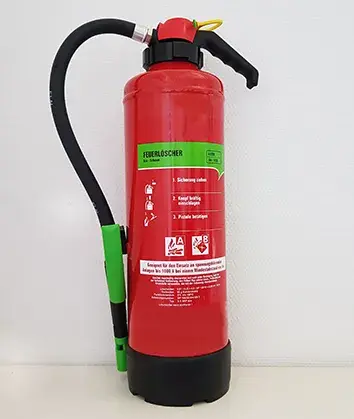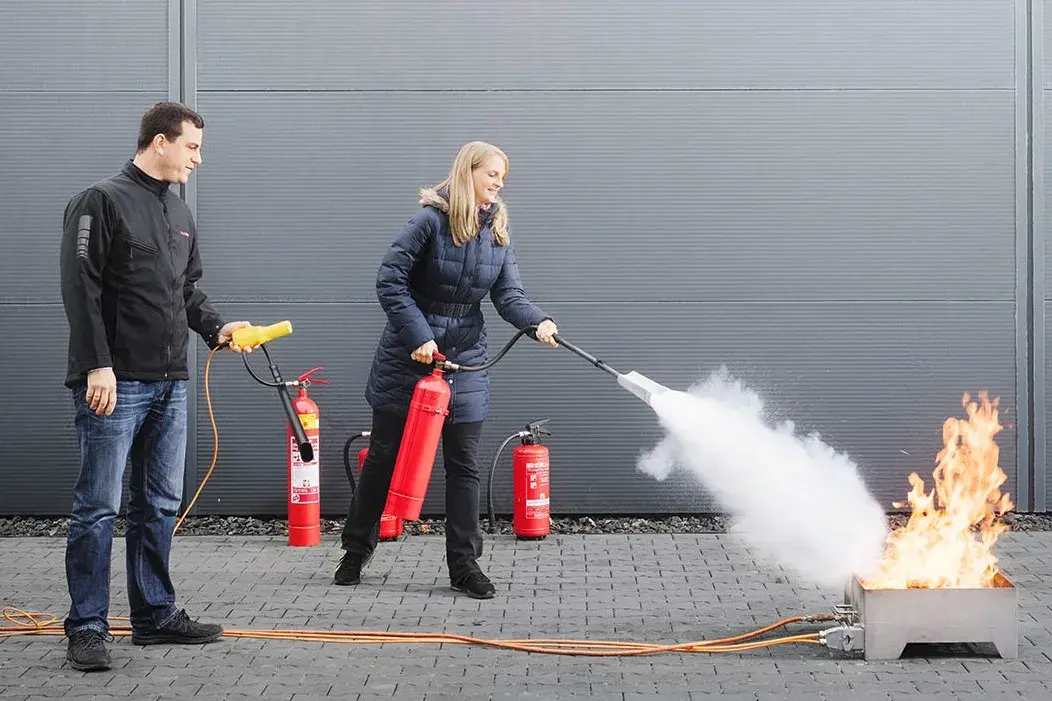Innovations in fire protection regulations 2021
In hardly any other area do the specifications change as often as in fire protection. So that you can keep an overview, we have again filtered out practical changes for you.
Environmentally friendly extinguishing agents
Environmental protection: Perfluorooctanoic acid (PFOA) is banned in the EU. This substance, which is harmful to the climate and poisonous to humans, is also contained in conventional foam extinguishing agents. The limit value that is still permitted is 0.025mg / kilogram. Fire extinguishers with extinguishing agents above this value must be replaced or converted as quickly as possible, because the replacement period has expired.
PFOA alternatives are, on the one hand, so-called C6 foam extinguishing agents. Hand-held fire extinguishers and mobile extinguishing devices filled with them often have labels such as “Bio”, “Eco” or “Green Foam”. Devices with a Millikeur approval are also labeled green. On the other hand, high-performance water extinguishers and water mist extinguishers are also possible alternatives. Whenever possible, our CWS Fire Safety experts recommend fluorine-free extinguishing agents. Before replacing devices, companies should seek comprehensive advice with the aim of finding a solution that is reliable, sustainable and economical. A risk assessment in advance is advisable.

Sprinkler guidelines
Water extinguishing systems: Sprinkler systems are part of the fire protection standard, especially in industrial and special buildings. Planning and installation are regulated in the international guideline VdS CEA 4001, among others. It is now available in an updated version. For example, there is a new appendix that describes interfaces to other sets of rules. Mixing different specifications is usually not permitted. In the appendix, however, exceptional cases are described in which the provisions of the American NFPA (National Fire Protection Association) and the US industrial insurer FM Global may be used. In addition, Appendix K.3 on handling flammable liquids has been completely revised. It contains measures for fields of application in which, in the opinion of the VdS, insufficient attention is paid to the risk of flammable liquids. This includes, for example, mixed storage in distribution centers of supermarkets, in which, among other things, flammable products such as nail polish remover are stored, as well as production areas in which there are bottles with lubricating oil.
Fire extinguishing during training to become a fire protection assistant
Fire extinguishing exercises: Practical fire extinguishing exercises are a compulsory part of the fire protection training. The DGUV has published an updated manual for optimal, safe planning and organization of fire extinguishing exercises. This is aimed at both employers and training providers such as CWS Fire-Safety.
The instructions not only describe how often such exercises should take place, but they also provide assistance in choosing the most suitable exercise location. Its minimum size is described in exactly the same way as safety and environmental protection aspects to be taken into account. In addition, the guideline defines minimum requirements for the fire simulators and fire extinguishing equipment provided. The handout “Selection and use of fire extinguishers for extinguishing exercises” was published as Fachbereich Aktuell FBFHB-025. We of course adhere to the points mentioned therein. Basically, we will discuss the course of the extinguishing exercise with you during an inspection prior to the fire protection training.

Revision of VdS 2106 for spark extinguishing systems
Spark extinguishing systems: The set of rules VdS 2106 requirements and areas of application for spark extinguishing systems has also been revised. On the one hand, it contains instructions for servicing and maintenance as well as additional schematic drawings. These should clarify the protection of objects and facilities with spark extinguishing systems. The guideline is aimed at operators, installers and planners. Spark extinguishing systems are used in companies in which sparks arise during the processing of materials such as fibers, dust and chips and can be passed on through closed conveyor systems. The construction of the entire system requires a protection concept in accordance with the new guideline VdS 2106.
